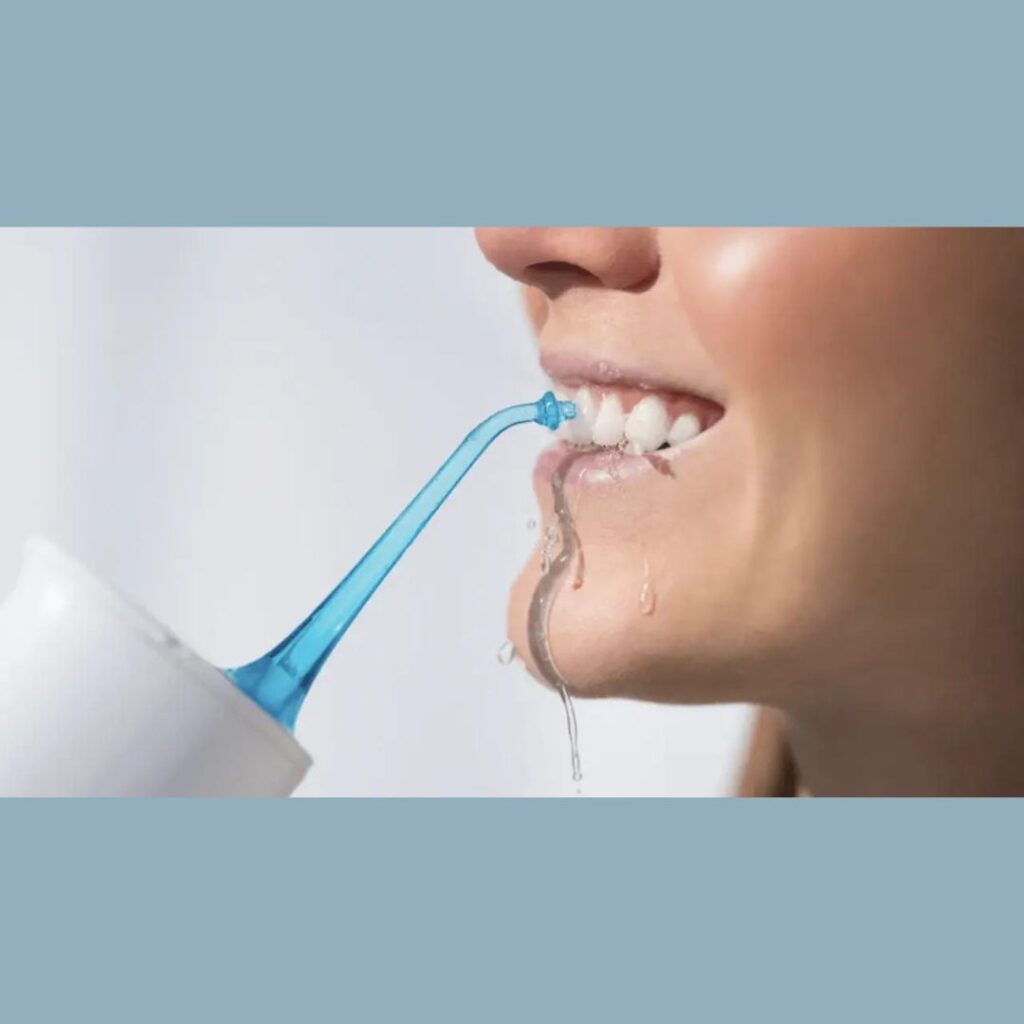Why Use A Water Flosser To Clean Your Teeth?

A water flosser, also known as an oral irrigator or dental water jet, is a dental hygiene device designed to clean and maintain oral health. It works by utilising a combination of water pressure and pulsations to remove food particles, debris, and plaque from between teeth and along the gumline. The key components of a water flosser include a water reservoir, a motor and pump system, a nozzle or tip, and a control interface. When activated, the motor pressurises the water from the reservoir and propels it through the nozzle as a focused stream.
How does a water flosser work?
A water flosser works by using a combination of water pressure and pulsations to clean between teeth and along the gumline. Here’s a step-by-step explanation of how it works:
Water Reservoir: The device has a water reservoir or tank that you fill with water. This reservoir is typically located at the base of the unit.
Motor and Pump: Inside the water flosser, there is a motor and pump system. When you turn the device on, this system pressurises the water in the reservoir.
Nozzle or Tip: The water flosser comes with a nozzle or a tip that you place in your mouth. The nozzle is designed to direct the pressurised water where you need it.
Pressurised Water Jet: When you activate the device, the motor and pump create a focused, pressurised stream of water, which is then expelled through the nozzle.
Cleaning Action: You control the nozzle’s placement in your mouth and direct the pressurised water between your teeth and along your gum line. The force of the water helps dislodge and remove food particles, debris, and plaque from these areas.
What are the benefits of using water flossers?
Using water flossers, also known as oral irrigators or dental water jets, can offer several benefits for oral hygiene:
Efficient cleaning: Water flossers effectively remove food particles, debris, and plaque from between teeth and along the gumline, promoting better oral health.
Gentle on gums: They are often considered gentler on sensitive gums than traditional floss, reducing the risk of irritation or bleeding.
Accessibility: Water flossers can be easier to use for people with braces, dental bridges, or limited hand dexterity, making them an accessible option for a broader range of individuals.
Customisable pressure: Many water flossers allow you to adjust the water pressure to your comfort level, ensuring a personalised and comfortable cleaning experience.
People with sensitive gums or a tendency to experience bleeding while flossing may find water flossers gentler on their gum tissue. Individuals with limited hand dexterity or mobility issues that make traditional flossing difficult may prefer the ease of using a water flosser. Anyone looking to enhance their oral hygiene routine and reduce the risk of gum disease or cavities can benefit from incorporating a water flosser into their daily regimen.